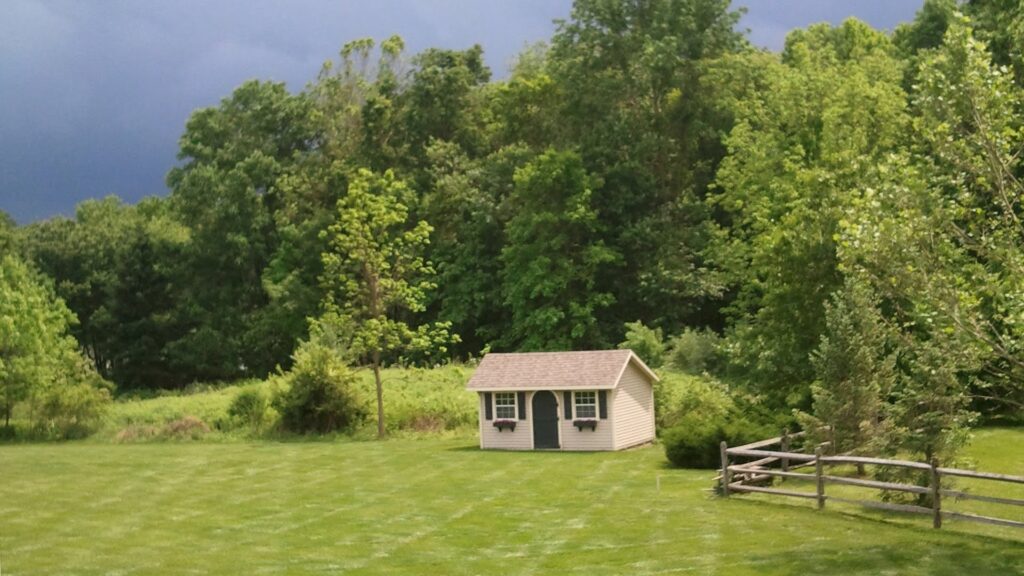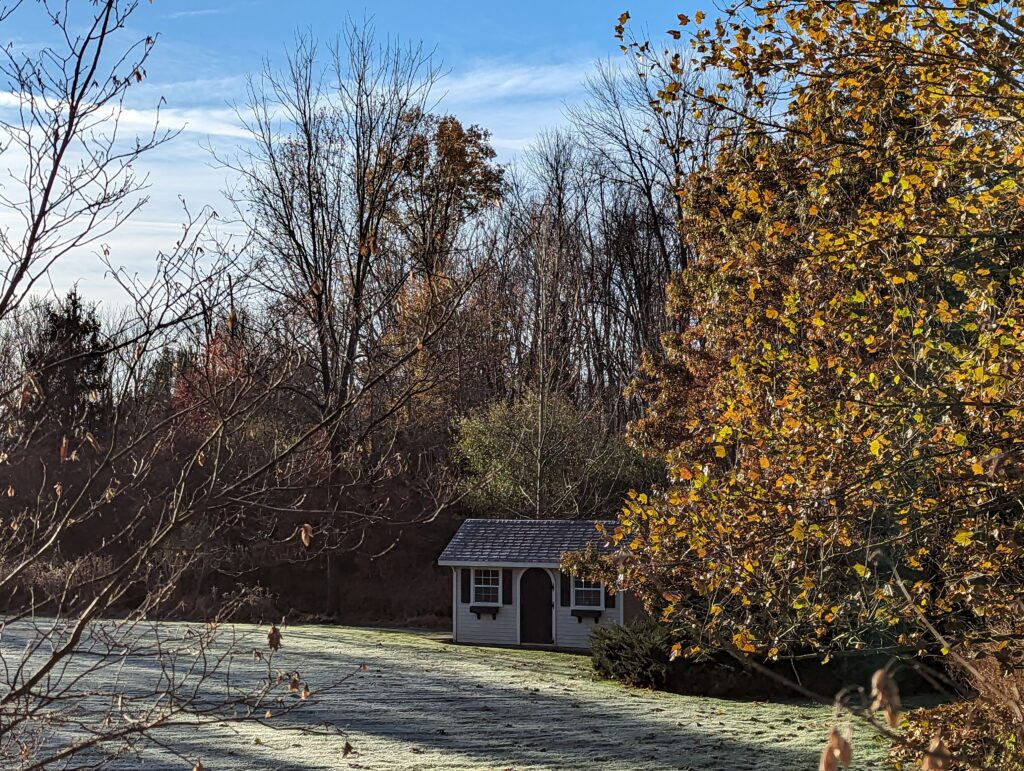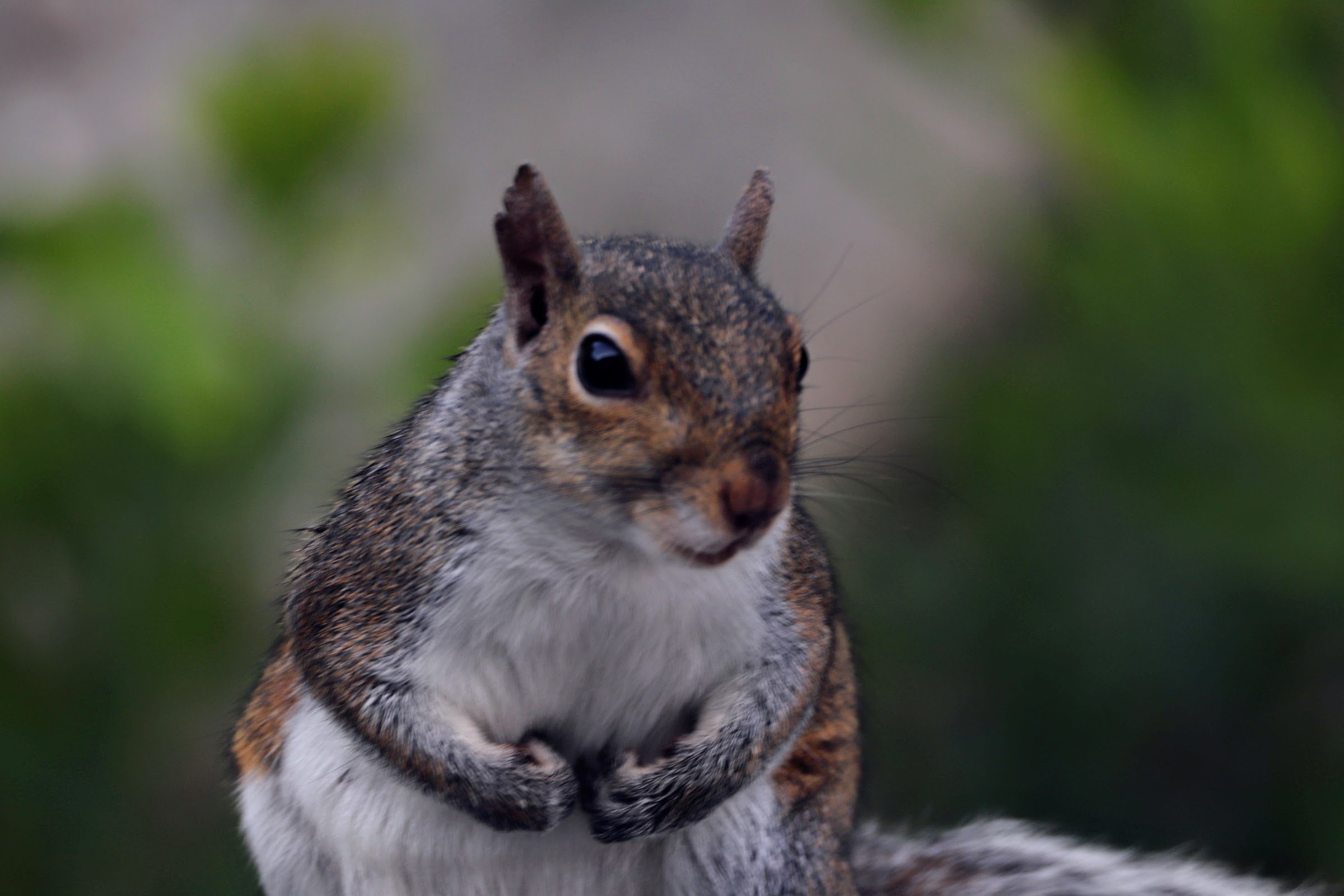Our resident backyard squirrel and the dirty little secret you didn’t know about black walnut trees
As we stockpile our canned pumpkin and sticks of butter around the time of Thanksgiving, I notice that we are not the only ones stockpiling our cupboards. Squirrels seem to always be running with their mouth around with a giant black walnut nut that seem ill-fitted to a tiny vermin with a fluffy tail. Blue jays are caching seeds and berries left and right, even taking the time once in a while to cover their stash with a leaf, as if to “hide” the loot, or simply to make it look like nothing happened here.
Black walnut trees abound in my neck of the woods, and the squirrels do seem to make the rounds hiding their stash. It almost looks like they are carrying a dirty tennis ball around the yard, and yet…somehow they manage. Evidence of the small broken pieces of the shells makes me wonder how they can break into that thick shell with ease. How, I am still not entirely sure. After they bury the goodies, it is comical to watch them pat the ground, like they are making the bed, laying their stashes to sleep for later on in the year. Yet for as much as squirrels go nuts for them, homeowners may not as they render the ground beneath them “poisoned.” But what you should know is that they are also the host plant for approximately 100 species of butterflies and moths, so they are not all bad!

We have a Black Walnut tree on the edge of property “that came with the house”. It was not that big when we first moved into our house, as seen here to the left of our garden shed. Prior to the shed being there, which we added, the tree was entangled by nasty invasive vines my husband reminded me. While we did not know any better at the time, we eventually learned that black walnut trees can have a negative effect on certain other plants or trees planted within their vicinity. To get super technical, the term allelopathy refers to the relationship among plants where one produces a substance which hampers the growth of plants sensitive to that substance. The Greek words “allelon” which means mutual, and “pathos” which means either suffering or feeling, make up the word allelopathy, and black walnuts are notorious for it. Thankfully, there are some native plants that don’t seem affected, and play nicely despite the presence of the chemical.

The name of the chemical it produces is called juglone and it occurs naturally in all parts of the tree. However, the highest concentration is right there in the soil…right where you may or may not have luck planting. The chemical is still present in the soil even if the tree is removed!
Black walnut (Juglans nigra) do have benefit though, they are prized obviously by squirrels. And woodworkers love them for its strength. And as you can see from these two photos, they are a relatively fast grower providing great shade. Just be sure you do not have one too close to your driveway, as those nuts are capable of falling right onto a car!
Here is a very small list of native plants that seem to have figured out how to have a positive relationship with the Black Walnut tree. There are many many more! Here is a complete list!
Certain varieties of native ferns
Bergamot
Virginia bluebells
Asters
Phlox
Jack-in-the-pulpit
Meatstick has been part of our family for nearly all of my daughter’s elementary school years. She has a kinked tail, notches in both ears and is smart enough to come straight to the door of the patio. Unlike her cousins who raid the feeder and drive me (well, nuts for sure) she doesn’t do that. She is polite, waiting at the door with her front paws at her chest. My daughter is now a teen, and she is still coming to the door. She knows.

No responses yet